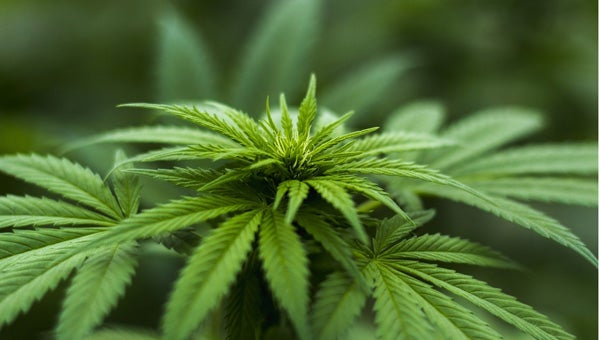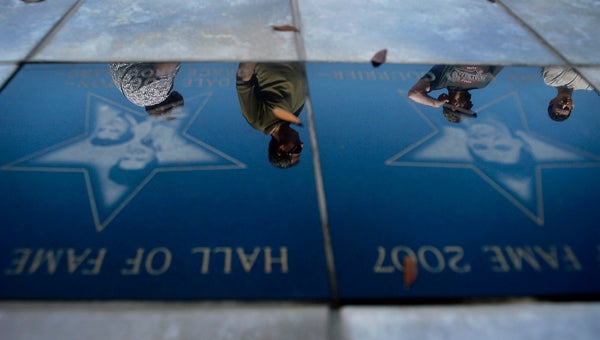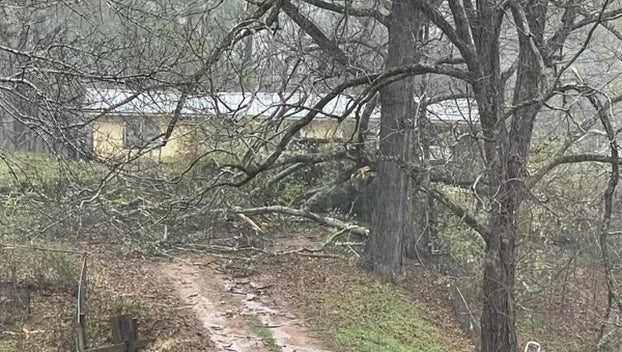Emergency declared in New Orleans over marsh fire
Published 12:03 am Wednesday, August 31, 2011
NEW ORLEANS (AP) — Mayor Mitch Landrieu said Tuesday he spotted a second marsh fire during a flight over one that has hazed the metro area with smoke for three days, and it was so close to a highway that he declared an emergency, allowing him to call out the Louisiana National Guard to help.
Four helicopters based in Hammond were at work Tuesday dropping water from 500-gallon baskets onto the fire and five based in Pineville would join them Wednesday, said Brig. Gen. Glenn H. Curtis, director of the joint staff for the Louisiana National Guard.
Haze from the fire was reported as far west as the Baton Rouge metro area, the National Weather Service said. It expanded its smoke alert from New Orleans and six suburban parishes to 23 parishes, including towns 100 miles from New Orleans.
Landrieu said he does not know how the second fire began. State Rep. Austin J. Badon, Jr., D-New Orleans, who flew over the fires separately from Landrieu, said he suspected human action because it’s too far from the first fire to have jumped over water and there haven’t been any recent thunderstorms. Either arson or hunters setting a fire to clear land is possible, he said.
As of Tuesday morning, the original fire had burned all but about 537 acres — about eight-tenths of a square mile — of the trees, shrubs and grass on a 1,552.5-acre area surrounded by canals, said Ryan Berni, spokesman for Landrieu. It started in the center of the area and has been spreading outward.
“It would take an armada of helicopters” to drop water on it and douse it,” Badon said.
Landrieu said he was told that each basket of water, when it hits earth, covers an area about the size of a pickup truck.
Berni said the new fire covered about 24 acres Tuesday — an area that can effectively be fought from the air.
It is southeast of the first one and, though much smaller now, has considerable room to spread on either side, Badon said.
Schools in New Orleans’ Recovery School District canceled outdoor activities because of smoke which has spread across the metropolitan area for three days now. So did schools in St. Charles Parish. Hundreds of students at Southern University New Orleans have asked the school nurse for face masks, said Badon, who is also SUNO’s director of community services.
Meteorologists expected the smoke to move north over Lake Pontchartrain by evening, but to settle over the metro area again overnight.
Although a Louisiana Department of Agriculture and Forestry spokesman said the larger fire was likely to burn itself out by Wednesday afternoon, Landrieu said it could take two days.
Even then, it could keep burning underground.
“Once it’s underground, it’s next to impossible to fight,” said Bret Lane, the top firefighter for the state’s agriculture department. “You can’t bring enough water to wet down that soil.”
A peat fire at Lake Bistineau burned for 3 1/2 months, he said.
The emergency department at the Interim LSU Public Hospital, which usually treats four or five patients a day for asthma, treated 24 patients with breathing problems in 24 hours, spokesman Marvin McGraw said. “It is not always clear if the symptoms are exclusively related to smoke from the New Orleans East marsh fire,” he said in a news release.
McGraw also said the hospital’s obstetrics and neurology clinics closed Tuesday because patients complained about the smoke, but were scheduled to reopen Wednesday
Along the East Coast, some 40 hot spots in the Great Dismal Swamp were still smoldering even after Hurricane Irene dumped 10 to 15 inches of rain on the area, according to a news release posted Tuesday on the U.S. Fish and Wildlife Service website. That fire that lightning started on Aug. 4 has burned more than 6,000 acres in southeastern Virginia and northeastern North Carolina.
Jasmine Groves, who lives less than four miles from the New Orleans fire, said there was so little smoke around her house that she didn’t bring her asthma inhaler into the central business district for a class Tuesday, only to have to deal with heavy smoke 10 miles from the fire.
“This is making breathing so hard,” she said. Even after her class was over, she said, “I’m still tasting it in my mouth.”
She said her 9-year-old son, who has asthma and allergies, has to stay inside his school rather than go out for recess or physical education.
Children, the elderly, and anyone with asthma or other medical conditions that might make them susceptible to smoke should stay indoors, making sure to replace air conditioner filters as they get dirty, health officials said.






